Coronary Artery Bypass Grafting (CABG)
Coronary Artery Bypass Grafting (CABG)
Coronary artery bypass grafting, or CABG (pronounced “cabbage”), is a type of operation that improves blood flow to the heart. This surgery is used to treat coronary artery disease (CAD). CABG also is known as bypass surgery, coronary artery bypass surgery, and open heart surgery.
A cardiothoracic surgeon performs the operation, along with the help of the heart team. The team includes an anesthesiologist, a perfusionist (heart-lung bypass machine specialist), other surgeons, physician assistants, nurses, and technicians.
During CABG, the surgeon uses your own veins or arteries to “bypass” narrowed areas of the coronary arteries. Oxygen-rich blood is routed around the blockage, creating a new path and restoring blood flow to the heart muscle. You may have more than one bypass done at a time, depending on how many coronary arteries are blocked.
Once recovered, most patients experience good results, with symptoms such as chest pain and shortness of breath reduced or eliminated altogether. In addition, CABG may improve your quality of life and help you resume a more active lifestyle.
According to the American Heart Association, CABG is the most common type of heart surgery, with more than 500,000 performed each year.
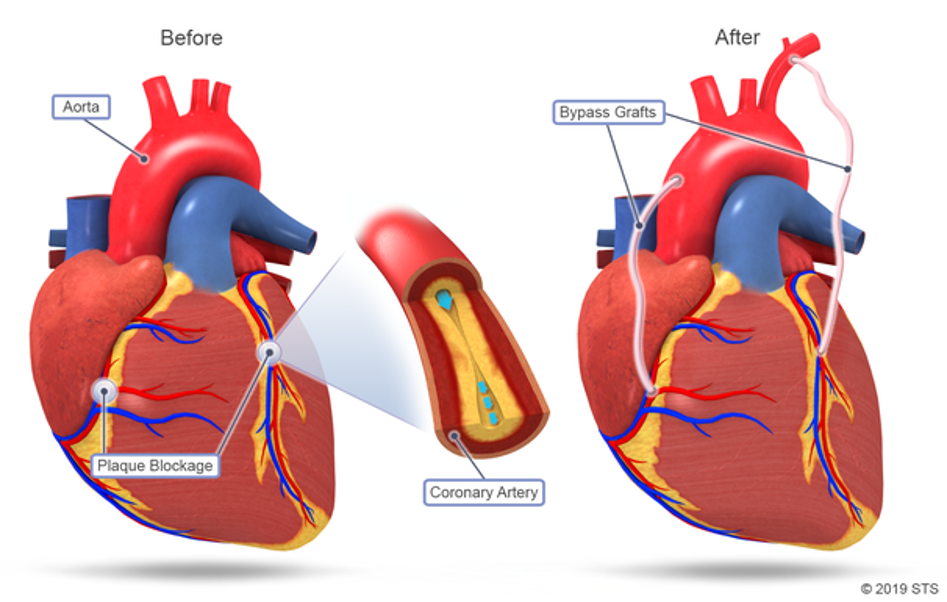
Who Needs CABG?
CABG is used to treat people who have severe CAD. CAD is the narrowing of the coronary arteries—the blood vessels that supply oxygen and nutrients to the heart muscle. This condition is caused by a buildup of fatty material called plaque within the walls of the arteries. Over time, that plaque—made up of fat, cholesterol, calcium, and other substances found in the blood—will become very hard. When this happens, the coronary arteries are narrowed or blocked, limiting the supply of oxygen-rich blood to the heart muscle.
You may feel things like:
- Chest pain or discomfort (known as angina)
- Irregular heartbeat
- Shortness of breath
CAD also can cause a blood clot to form, cutting off blood flow and leading to a heart attack.
Am I a candidate for CABG?
To decide whether or not you need CABG, your doctor will do a physical exam and evaluate your cardiovascular system, including your heart, lungs, and pulse. You can expect to discuss the length, frequency, and severity of any symptoms you may be having.
When determining whether you’re a candidate for CABG, your doctor also will consider your:
- History and past treatment of heart disease, including surgeries, procedures, and medications
- History of other diseases and conditions
- Age and general health
- Family history
Medicines, lifestyle changes, and other procedures may be tried before CABG is recommended for you. If you experience limited success with these other treatment choices, CABG may be an effective and viable option.
What Can I Expect Before Cabg?
- Arrange For Transportation
- Find Someone To Help You At Home
- Follow Your Doctor’s Instructions
- Choose Comfortable Clothes To Wear
To determine which arteries are blocked, the extent of blockage, and whether there is any heart damage, medical tests such as an electrocardiogram (EKG), chest X-ray, cardiac catheterization, stress test, echocardiogram (echo), and angiogram will be performed. If the tests show that you have severe blockages in your coronary arteries, your doctor may admit you to the hospital immediately in order to perform CABG as soon as possible.
If the tests determine that there is no urgency, you will schedule the surgery and likely be admitted to the hospital on the same day as the operation. Your surgeon will give you specific instructions about how to prepare, including what to eat or drink, what medicines to take, and what activities to stop before the operation.
It is important that you tell your doctor about any vitamins and supplements you take, even if they are natural, in case they could affect your risk of bleeding. In addition, if you smoke, stop smoking as soon as possible. This will improve your chances for a successful recovery and benefit your overall health.
You also should:
- Arrange for transportation the day of your surgery. Several additional tests and administrative tasks must be done before you are ready for surgery, so it is very important to arrive on time.
- Find someone to help you at home during your first week out of the hospital and to help with chores and errands for up to 2 months after your surgery.
- Follow your doctor’s instructions on exactly when to stop eating and drinking. If you don’t, your surgery may be canceled.
- Choose comfortable clothes to wear while traveling to and from the hospital. Also, pack a bag that you will bring to the hospital.
As you prepare for your CABG surgery, you can take an active role by asking questions and educating yourself. In the weeks of recovery after the surgery, you will be glad that you did.
What Can I Expect During CABG?
Who is in the operating room?
Knowing who will be in the operating room with you can help put your mind at ease. In addition to your cardiothoracic surgeon, there likely will be several other people in the room, including:
- A surgical assistant who is one of the surgeon’s partners or a physician assistant who will help, as needed, during the operation.
- An anesthesiologist who is in charge of administering anesthesia and monitoring vital signs.
- Perfusionists who operate the heart-lung bypass machine and other technical equipment that supports the surgery.
- Nurses and technicians who assist the surgical team and prepare the operating room.
What will happen during the operation?
On the day of your surgery, you will meet with the anesthesiologist, who will review with you any previous complications or concerns that you have about undergoing general anesthesia. Your anesthesiologist will discuss the risks and benefits of anesthesia, as well as any possible side effects and complications. You’ll receive general anesthesia, which means you won’t be awake for the operation.
Once you’re asleep, a tube is put into your windpipe through your mouth, a process called intubation. This tube is then attached to a ventilator that provides oxygen and helps you breathe. In addition, a soft,flexible tube called a catheter will be placed in your bladder to remove any urine. Your medical team will monitor your vital signs, such as blood pressure, heart rhythm, and blood oxygen levels during the operation.
Your surgeon will make a 6-to-8-inch incision along the middle of the chest. The cut will go through the breastbone in order to access the heart and see the coronary arteries. Your coronary arteries are found on the front and back surfaces of the heart. Next, the surgeon will prepare the arteries or remove the veins that will be used as “grafts” to build your bypass. The surgeon may remove a piece of healthy blood vessel from the inside of your leg, your forearm, or just behind your chest wall.
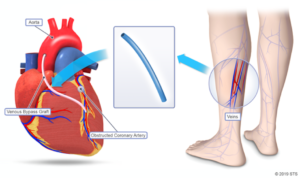
While your chest cavity is being opened, the surgeon’s assistant may begin harvesting healthy blood vessels from your arm or leg. The harvested veins are placed in sterile saline solution and cut into appropriate lengths when the surgeon is ready.
How long does CABG take?
The length of time the operation takes will vary based on the type of CABG performed, number of vessels being bypassed, the graft location, your medical history, and other special needs you may have. In general, CABG takes 3 to 6 hours.
What are the risks of CABG?
CABG has been proven to be safe and effective, but like all surgeries, it may result in serious complications:
- Blood clots that can increase your chances of stroke, heart attack, or lung problems
- Bleeding during or after the surgery
- Wound infection and bleeding
- Reactions to anesthesia
- Abnormal heart rhythms
- Pneumonia
- Breathing problems
- Fever and pain
- Kidney failure
- Memory loss and trouble concentrating or thinking clearly
Many things affect these risks, including your age, how many bypasses you get, and any other medical conditions you may have. Typically, the risk of complications is higher if CABG is performed in an emergency situation (for example, during a heart attack), if you’re older than 70, or if you have a history of smoking. Be sure to discuss these risks with your surgeon before the operation.
You can access the STS Risk Calculator, which can help calculate your risk of death or other complications from certain types of heart surgery, including CABG. The results can help you and your doctor to determine the best course of treatment. The STS National Database has collected information from millions of patients in order to predict risk and assure quality associated with CABG.
On-pump CABG
During the traditional “on-pump” surgery, a heart-lung bypass machine takes over the work of the heart and lungs. This allows the heart to be completely at rest while the surgeon performs the bypass surgery. The heart-lung machine also helps your body receive the oxygen and blood flow it needs during the surgery. The on-pump operation is the most common CABG surgery.
The bypass grafts are attached by sewing one section of the artery or vein around a tiny opening just below the blockage in the diseased coronary artery and attaching the other end to a tiny opening made in the aorta. This redirects the blood flow around the blockage. If a chest wall artery is used for a graft, one end is connected to the coronary artery while the other remains attached to the aorta. Strong stitches or sutures are used to connect the grafts.
Once the grafts are in place, the pump is turned off and your heart beat and blood flow return to normal. You may need several grafts during the same surgery. The use of two (double), three (triple), or four (quadruple) bypasses is now routine.
Your surgeon will place several small plastic tubes inside your chest cavity, with one end exiting your body through an incision in your upper abdomen. These tubes allow drainage of any extra fluids from the space around your heart. Chest tubes are usually removed 1 – 3 days after surgery. Your surgeon will then close your rib cage and use stainless steel to wire together the two halves of your breastbone. The muscles and soft tissues in your chest will be sewn together with heavy-duty sutures. The skin will be closed with dissoluble sutures.
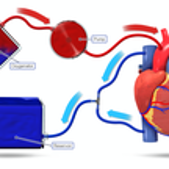
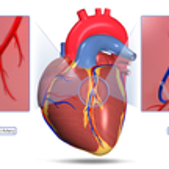
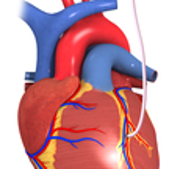
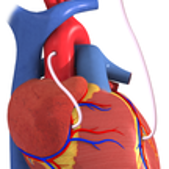
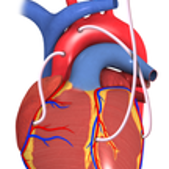
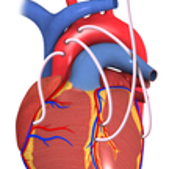
Minimally invasive CABG
Your surgeon may use minimally invasive surgical techniques such as port-access or keyhole surgery for the CABG surgery. The surgery also may be performed with the use of robotics and video imaging that help the surgeon operate in a small area. These surgical techniques require smaller incisions rather than opening the chest bone to get to the heart. Some require the use a heart-lung bypass machine; others do not.
You and your doctor can discuss whether minimally invasive CABG surgery is a good option for you. The decision depends on factors such as your overall health, how bad your CAD is, and how many bypasses need to be created.
Recovery
Recovery in the hospital
When you wake up from surgery, you will feel groggy. You’ll be in the intensive care unit (ICU), where you’ll spend 1 to 2 days. Your heart rate, blood pressure, and oxygen levels will be checked regularly during this time. While you are in the ICU, your family will be able to visit you briefly.
Through an intravenous (IV) line in your arm, you’ll receive fluids and medications. The breathing tube will remain in place until you are awake and able to breathe on your own. You also will still have the catheter in your bladder to drain urine. When you’re able to get up and use the bathroom on your own, the nurses will remove it. The chest tubes will remain in place for 1 to 3 days after the operation.
Your doctor may recommend that you wear compression stockings on your legs as well, in order to prevent blood from pooling and clotting. These stockings are tight at the ankle and become looser as they go up the leg.
You’ll have the most discomfort in the first 2 to 3 days following the operation. Usually within the first 24 hours after surgery, you should be able to sit in a chair, start walking, and begin breathing exercises to help reduce the risk of lung complications. In addition, by day 2, you will be eating solid foods. You’ll also be ready to move out of the ICU. After leaving the ICU, you’ll go to a transitional care unit of the hospital for 3 to 5 days.
CABG is not a cure for CAD, so it is important that you and your doctor discuss a treatment plan that includes lifestyle changes to help you stay healthy. The recommendations may include:
- Not smoking
- Taking medicines that lower “bad” (LDL) cholesterol
- Becoming more active
- Maintaining a healthy weight
- Cutting back on saturated fat (unhealthy fats)
- Adding more vegetables, whole grains, and fruits to your diet
Your doctor and nurses also will give you instructions for
recovering at home, especially concerning:
- How to care for your incisions
- How to recognize signs of infection or other complications
- When to call the doctor
- When to make follow-up appointments
Cardiac Rehabilitation
Your doctor may refer you to cardiac rehabilitation (rehab), which is a structured exercise program that can help you increase your physical activity level while under the direct supervision of medical professionals. The program includes work with dieticians, occupational therapists, psychologists, and other health care providers who can help you recover from your surgery and feel confident that you have the skills to adopt a heart-healthy lifestyle. You may begin cardiac rehab while you are still in the hospital and continue it for months after your operation.

Talk to your doctor about whether cardiac rehab might benefit you.
Medications
Your doctor will prescribe medications to manage pain during recovery, lower cholesterol and blood pressure, reduce the risk of blood clots forming, manage diabetes, or treat depression. You should take the medication exactly as prescribed. This is an important part of your care after surgery.
Your discharge from the hospital will depend on how fast you recover and whether you experience any complications, but you should expect your stay to be approximately 4 – 7 days depending on your overall health.
Recovery at home
For the first 3 to 6 weeks, you’ll probably feel tired often. This is because your body is using a lot of energy to heal itself. Be patient; your fatigue will improve with time. You may find that it is difficult to allow people to help, but delegating some tasks and learning to accept assistance may help you recover faster. Full recovery from CABG may take 8 – 12 weeks.
It is not uncommon to experience anxiety or depression after heart surgery. If you are feeling especially worried or stressed, reach out to your treatment team, family, and friends. You also may want to consider joining a support group or talking with a professional counselor.
Side effects
You will receive instructions on how to deal with common side effects from surgery, such as:
- Discomfort or itching from healing incisions
- Swelling of the area where an artery or vein was removed for grafting
- Muscle pain or tightness in the shoulders and upper back
- Fatigue (tiredness), mood swings, or depression
- Problems sleeping or loss of appetite
- Constipation
- Chest pain around the site of the chest bone incision
Side effects often go away within 4 to 6 weeks.
Most wound infections develop within 14 days of the surgery. If you develop any of the following signs or symptoms, you should contact our office at (949) 650 – 3350 immediately:
- Fever greater than 100.4° F
- New or worsened pain in the chest or around the incision
- A rapid heart rate
- Reddened skin, bleeding or pus-like drainage from the incision
Physical activity
Your doctor will advise you when you can start physical activity again. It varies from person to person, but after 6 weeks, most people can resume driving and return to work (unless your job involves demanding physical activity).
It’s also important that you don’t simply sit in bed or on the couch all day once you leave the hospital. Even if you’re only able to walk for a few minutes at a time, getting up and doing so 3x/day can help your recovery. As you grow stronger, try to walk for longer periods of time, but be careful not to wear yourself out. Even normal, everyday activities may be tiring for you, so make sure to stop and sit down if you start feeling overwhelmed. Try to move for at least 30 minutes a day.
Ongoing Care
Care after surgery will include periodic checkups with your doctors. Your first appointment after surgery will be with the cardiothoracic PA-C’s. Then you will need to meet with your cardiologist and primary care physician within the first month of surgery. You will meet with your surgeon usually at the 4 – 6 weeks marks after surgery. During the visit, it is important to bring a current medication list to each appointment.
